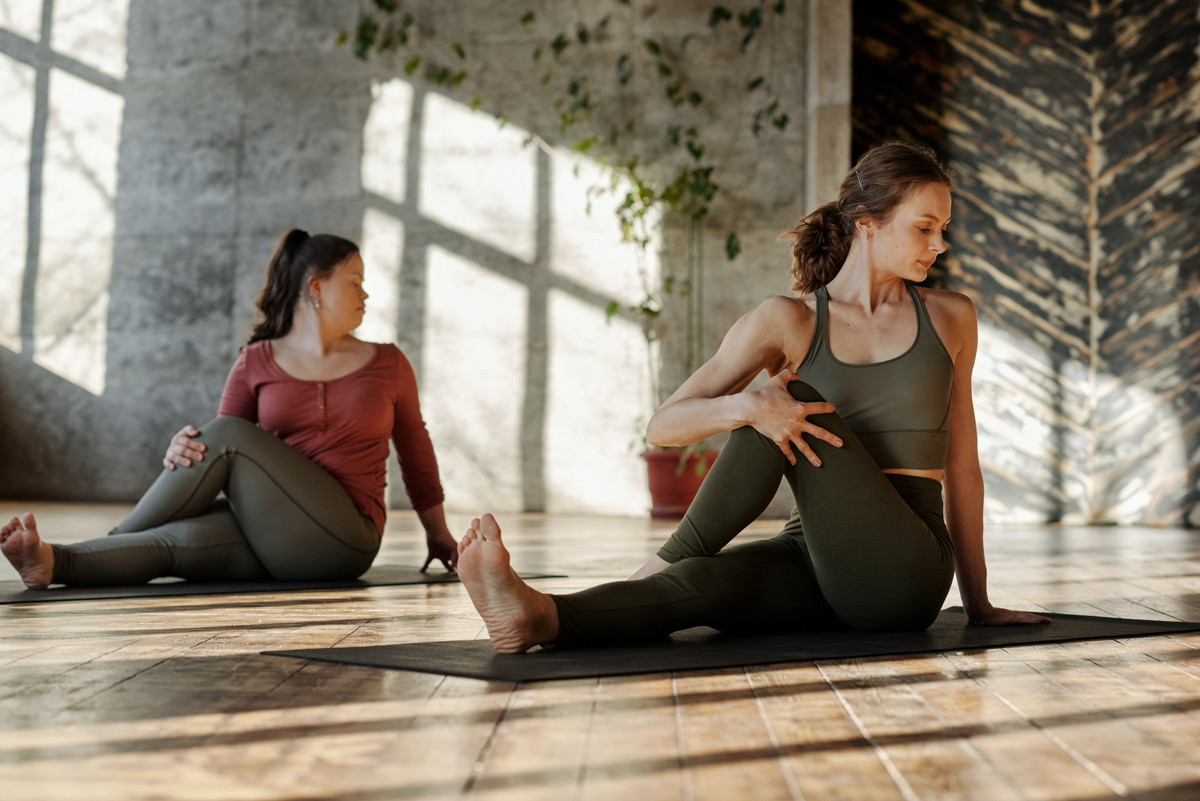Yoga Pose and Poetry Pairings
Poetry and yoga both emphasize slowing down, cultivating a greater awareness, and taking time to reflect. In fact, if you’re a poetry reader and yogi, you may find it natural and inspiring to read poetry before or after your practice. With these pairings, we’ve taken it one step further—matching some of the most beloved yoga poses with poems that carry the same ideas and spirit. Leaning into one poem and one pose can give you time to focus on its details and find a deeper stillness.
Tree pose and “Tree At My Window” by Robert Frost
Watch this guide to tree pose to learn how to add it to your flow:
Tree pose is all about balance. The yogi stands on one leg with the other leg resting against their calf, knee, or inner -thigh. From there, the yogi can bring their hands to a prayer position in front of their chest, or expand their arms outward above their head to further embody—or grow—their tree.
Finding this level of balance relies on a lot of inner -strength, specifically in the legs and core. Some days this might be easy to channel, while other days yogis will sway, wobble, or fall out of the pose altogether—which is all part of the process.
In Robert Frost’s “Tree At My Window,” Frost writes about the connection between humans and nature that this pose strives to emulate: “Tree at my window, window tree, / My sash is lowered when night comes on; / But let there never be curtain drawn / Between you and me.” Similarly, Frost reflects on how both trees and humans can go through periods of imbalance, and how having a spiritual practice—such as yoga or spending time in nature—can provide comfort in turbulent times. “But tree, I have seen you taken and tossed, / And if you have seen me when I slept, / You have seen me when I was taken and swept, / And all but lost.”
Mountain pose and “Still I Rise” by Maya Angelou
Watch this guide to mountain pose to learn how to add it to your flow:
Mountain pose often begins and ends flows, with the yogi standing tall with their hands at their sides or above their head.
This is a confident pose and one that can help yogis realize their own power. As its name indicates, anyone in this pose resembles a mountain: sturdy, upright, and aware of their own alignment. While this pose can seem deceptively easy, it involves strength and a deep focus on posture. Similarly, the bold and determined confidence at the center of Maya Angelou’s poem “Still I Rise” may seem innate, but developing self-love is a disciplined and radical daily practice.
“Just like moons and like suns, / With the certainty of tides, / Just like hopes springing high, / Still I’ll rise,” writes Angelou.
Child’s pose and “The Child’s Faith Is New” by Emily Dickinson
Watch this guide to child’s pose to learn how to add it to your flow:
Child’s pose is often the first pose people learn in yoga, as well as the one they return to when they need to rest during a flow. This pose provides comfort and a return to a beginner’s mind. To recuperate in child’s pose, sit on your heels and rest your forehead against your mat or the floor. For an extended child’s pose, maintain the same position but stretch your arms above your head.
This position is a return to simplicity and youthfulness, just as Emily Dickinson writes about in “The Child’s Faith Is New.” She illustrates a sense of play and innocence: “The Child’s faith is new– / Whole–like His Principle– / Wide–like the Sunrise / on fresh Eyes–/ Never had a Doubt / Laughs.”
Warrior 1, 2, and 3 and “I Want” by Jordan Jace
Watch this guide to the warrior poses to learn how to add them to your flow:
Though yoga often focuses on finding inner -peace and serenity, it can also help build the courage, hope, and stamina that empower people to fight for social change. The warrior poses, a series of lunging and standing positions that often lead into each other, can be more intense and actively cultivate strength. It’s common for people to struggle through these poses or get tired at first—the same way that organizing for change can be exhausting, but also rewarding and necessary. The warrior poses offer an opportunity to consider what’s worth fighting for and how to reach a goal.
In Jordan Jace’s “I Want,” they put forth a revolutionary vision and a call to action, as well as interweave the personal and the political. “I want to clean my room every week / and make my bed and put peppermint in my hair / to stop needing my inhalers / and to inhale solidarity, and to eat the rich, / I want to eat the rich, to cancel the rents, / to know my neighbors, and to know my neighbors / are safe,” writes Jace. “I want to move like water, to move / from unity to struggle to unity, / to have no perfect world we haven’t fought for.”
Looking for more ways to connect poetry with relaxation, self-care, and spirituality? Check out our round-up of poems to pair with your meditation practice.




